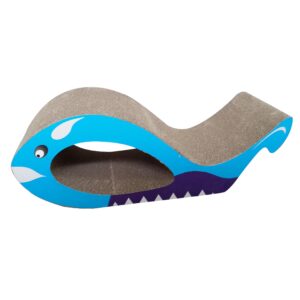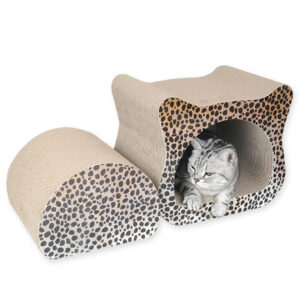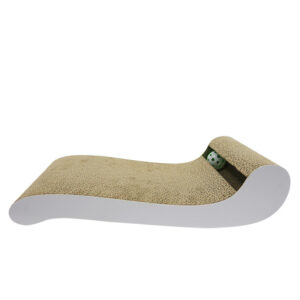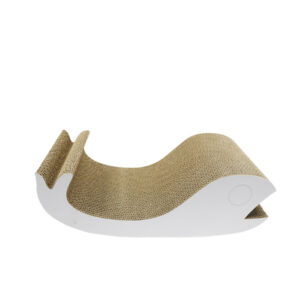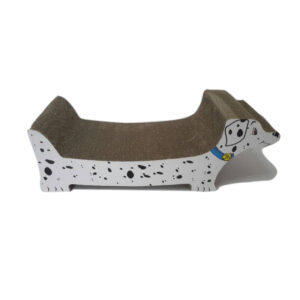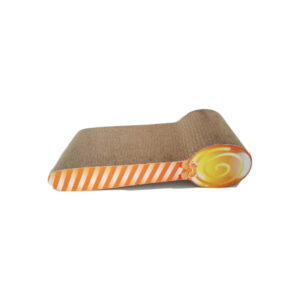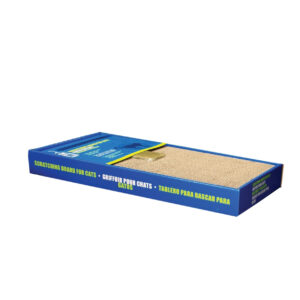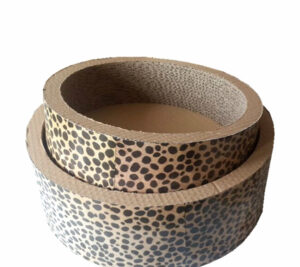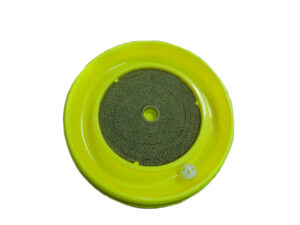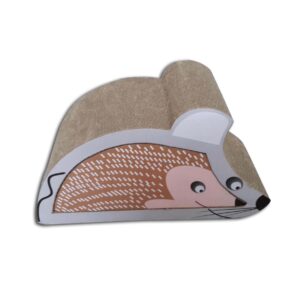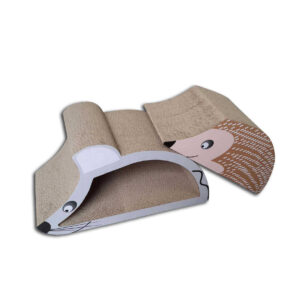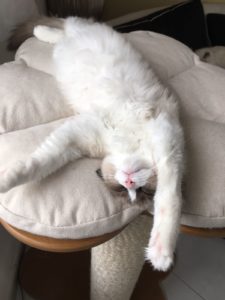Unlike other kinds of animals, such as dogs, cats have retractable claws, which are not consumed while walking. When cats sharpen their claws on your furniture, they do so instinctively: so it is useless to get angry and scold them. In fact, it is counterproductive, because chances are you will stress them – which will probably make them want to scratch even more. For cats, to scratch is to mark their territory, both visually and through olfaction (toe pads release feromons that make information, such as sex and age, available to other cats). While an important and pleasing experience for our pets – it gives them confidence and a sense of tranquillity – scratching is bad for our furniture: sofas, armchairs, chairs and carpets are all potential targets and risk susbtantial damage. The function of scratchers is to offer our pets an alternative place to vent their natural instinct and find moments of pleasure and relaxation. The scratcher is a home within home, a place a cat perceives as safe and comfortable. The scratcher is also a useful way of keeping our pet’s muscles toned and tendons healthy. It therefore contributes to our cat’s overall well-being.
How to choose a scratcher
There is a huge variety of scratchers on the market: for small cats and big, for kittens, with or without kennel, of different heights and widths, cheap and higher-quality, tubular or structured as towers – and so forth. You might also decide to build one. A scratcher, however, must be chosen very carefully: apart from such factors as appearance, cost and volume, we must make sure it has certain indispensible features.
First of all, a scratcher must be sufficiently tall as to allow your cat to stretch comfortably and fully by arching its back. The best scratching posts have several planes and platforms, allowing movement between different positions. Stability is a fundamental requirement: while climbing or sharpening its claws, your cat must feel safe. A wobbly scratching post – one that the cat feels might tip over – will make your pet lose interest for it permanently. A good scratcher must be realised with materials allowing claws to bite into – soft but sufficiently resistant as not to force you to buy a new scratcher every year.


